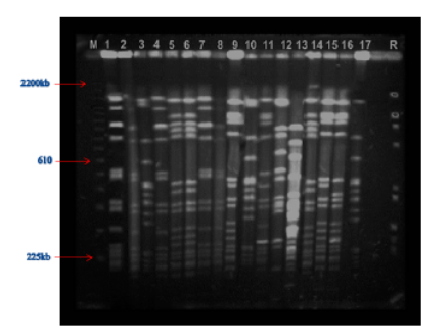


Indian Journal of Science and Technology
Year: 2022, Volume: 15, Issue: 41, Pages: 2171-2181
Original Article
Tagreed Sabeeh Abdulla1, Saad Sabah Fakhry1*, Sundus Ali Jassin1, Farqad Abdullah Rashid1, Ali Abdel Qader Abdulbaqi1
1Food Contamination Research Center, Food Contamination Research Center at the Ministry of Science and Technology, Directorate of Environment and Water, Al Jadyria, Baghdad, Iraq
*Corresponding Author
Email: [email protected]
Received Date:04 January 2022, Accepted Date:25 May 2022, Published Date:08 November 2022
Objectives: To identify and to characterize of methicillin-resistant Staphylococcus aureus (MRSA) isolates collected from food (n=43), food handler (n=8), and clinical samples (n=15). Methods: Genotyping was applied for the purposes of epidemiological investigation and source tracking of these isolates. Pulsed field gel electrophoresis (PFGE) was performed using the restriction endonucleases SmaI. Findings: PFGE analysis showed that pulse types of isolates from clinical samples differed that from food and food handler isolates. However, a similarity was observed between pulse types of isolates from food and food handlers, suggesting an epidemiological association between isolates from these two sources and that MRSA may be transmitted from food handlers to foods. Novelty : PFGE genotyping of MRSA isolates was useful, as a first study of its type in Iraq, for investigating epidemiological relatedness and even contaminated food sources.
Keywords: Epidemiology; MRSA isolates; PFGE; SmaI
© 2022 Abdulla et al. This is an open-access article distributed under the terms of the Creative Commons Attribution License, which permits unrestricted use, distribution, and reproduction in any medium, provided the original author and source are credited. Published By Indian Society for Education and Environment (iSee)
Subscribe now for latest articles and news.